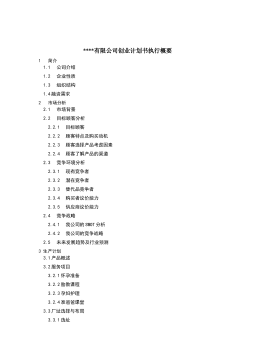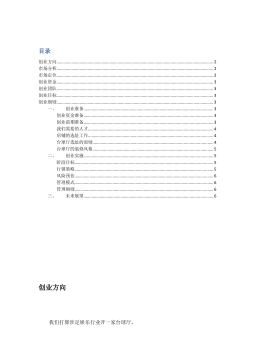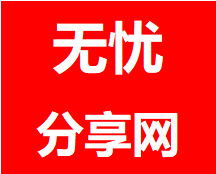基于污泥沸石的合成材料配比及其处理水景污染实验研究
VIP免费
基于污泥沸石的合成材料配比及其处
理水景污染实验研究
摘 要
为了美化城市环境,以及人们对居住小区等公共场所的人文景观和自然环
境越来越高的要求,现代社会中,采用借景和造景将形式各异的水景引进生活
小区等公共场所的案例越来越多。创造亲水的自然环境的同时,水景污染问题也
越来越严重,成为水污染亟待解决的重点问题之一。同时,城市污水处理中产生
的大量污泥,若处理不当,排放后将会对环境造成严重的二次污染。为此,科学
合理、安全可靠经济地处理处置污泥已作为一个急需解决的环境问题,越来越受
到公众关注。本文在实际调研了上海市 13 区 48 座污水处理厂以及 7 家水环境重
点监管企业污泥处理处置的情况下,以微波处理后城市污水厂污泥、天然沸石和
水泥为原材料,不进行任何改性,研制了一种既具有脱氮除磷功能,又具备抗
压强度,并可在水体中保持一定形态的低能耗生态非金属矿物合成材料。并针对
景观水体的污染特点,将此材料用于景观水体脱氮除磷的研究。
基于目前水景污染情况,以及污泥处理处置技术现状,本文对以污泥作为
添加原料的合成材料进行了静态以及动态研究,情况如下:
在确定原材料为污泥、水泥以及天然沸石的基础上,通过不同质量配比的原
材料成型实验,确定水泥:天然沸石:污泥质量比为 1:2:0.05,水灰比为 0.4,
以及发泡剂与水的体积比例为 1:60 的配比为最佳合成材料配比。在此配比下,
合成材料挤压成立方体或球形后经养护,可具有良好的耐水性,同时测得其 7d
的抗压强度为 5.8MPa,符合目前河道驳岸等示范工程的需要。经电镜扫描后发
现,合成材料有较为明显的孔道,材料的比表面积有所增加。
通过对合成材料吸附性能静态实验研究发现,合成材料对氨氮、总磷的最大
吸附量分别可达到 229.8mg/kg 以及 321.4mg/kg,且符合准二级动力学模型。在
合成材料处理水景污染静态实验研究中发现,对于合成材料的吸附而言,氨氮
和总磷之间存在争相吸附现象,也就是在氨氮和总磷这两种吸附质共存时,吸
附剂即该合成材料对其中的一种吸附质的吸附能力通常要比只含这种吸附质的
吸附能力低。
在静态实验的基础上,本文还进行了合成材料处理水景污染动态实验研究,
旨在结合合成材料本身的吸附性能和材料表面以及内部生成的生物膜的联合作
用下,对景观水中污染物的去除。在实验的开始阶段,CODCr、氨氮和 TP 的去除
主要是依靠合成材料的吸附过滤作用。生物膜稳定形成后各指标波动较小,在模
拟实际工况条件下,污泥池 CODCr 的去除率维持在 42%左右,氨氮的去除率维持
在 19.8%左右,TP 的去除率维持在 40%左右,总氮的去除率维持在 12.8%左右,
TOC 的去除率维持在 23%左右;整体CODCr 的去除率维持在 65%左右,氨氮的去除
率维持在 34%左右,TP 的去除率维持在 53%左右,总氮的去除率维持在 28%左右,
TOC 的去除率维持在 39%左右。
利用微波处理后的污泥制备合成材料,同时在生物作用下,合成材料具有
了一定的再生效果,为实现材料的持续使用提供了技术支撑。合成材料的研制,
既解决了城市污水处理厂污泥的处置问题,又对景观水体中的污染物去除起到
了很好的效果,不失为一种污泥资源化的新方法。
关键词: 污泥 天然沸石 水泥 合成材料 水景 脱氮除磷
ABSTRACT
In order to beautify the urban environment and meet the high demand for
residential area in public places such as the cultural landscape and the natural
environment, in contemporary society, there are increasing cases on kinds of
waterscapes were introduced into living areas or other public places. Water pollution,
one of the key problems need solved right away, is becoming serious followed the
creation of hydrophilic natural environment. At the same time, urban sewage
treatments produce a large number of sludge. If handling improperly, the emissions
will cause serious secondary pollution. Therefore, how to disposal sludge in a
scientific, reasonable, safe, reliable and economic way, which is concerned by the
public, is an urgent issue which need to resolve. Based on the actual investigation of
48 sewage treatments and 7 enterprises in 13 districts in Shanghai, a kind of
ecological non-metallic mineral synthetic material was made without any
modification combined by microwave processing sludge, natural zeolite and cement.
This material is low energy consumption. It has compressive strength so that it can
keep a certain form in water. This new material can also remove nitrogen and
phosphorus simultaneously. Based on the characteristic of landscape water,
experiments about nitrogen and phosphorus removal were studied.
In this paper, static trail and dynamic test were designed and tested using the new
material containing sludge as the raw material. The processes are as followed:
Compared different material’s proportion, the best proportion is confirmed. The
mass ratio of cement, natural zeolite and sludge is 1:2:0.05, water cement ratio is 0.4,
the volume ratio of foaming agent and water is 1:60. With the best proportion, this
material was made into cubes or spheres. After curing process, they have good
waterproof and 5.8MPa compression strength in 7 days. These meet the requirement
of demonstration projects of channel revetment. With the help of Scanning Electron
Microscope, it shows that this synthetic material contains obvious channel and the
specific surface area of the material has increased.
The adsorption capacity of ammonia nitrogen and total phosphorus were studied
in the static trial, which could reach up to 229.8mg/kg and 321.4mg/kg respectively.
They conformed to the secondary dynamics model. From the static test, it also showed
that when ammonia nitrogen and total phosphorus coexist, the adsorption capacity of
the material decreased.
The paper also discussed the dynamic test of the synthetic materials dealing with
water pollution, which using the adsorptive property of the material and the biological
film inside. At the beginning, the removal of CODcr, ammonia nitrogen and total
phosphorus depended on the adsorption and filtration of the material. Small
fluctuation was showed by the indexes since biofilm had formed stability. In sludge-
tank CODcr removal rate was about 42%, ammonia nitrogen removal rate was about
19.8%, total phosphorus removal was about 40%, total nitrogen removal rate was
about 12.8%, TOC removal rate was about 23%. In all units, CODcr removal rate was
about 65%, ammonia nitrogen removal rate was about 34%, total phosphorus removal
was about 53%, total nitrogen removal rate was about 28%, TOC removal rate was
about 39%.
Synthetic material performs a certain regeneration effect when contains
microwave processing sludge and biological action. Studying synthetic material can
not only deal with the issue of sludge from municipal sewage plant, but also remove
contaminate in water. It is a new way of sludge resources.
Key Word: sludge, natural zeolite, cement, synthetic material,
landscape water, nitrogen and phosphorus removal
目 录
中文摘要
ABSTRACT
第一章 绪 论...............................................................................................................1
1.1 城市水景污染现状..........................................................................................1
1.1.1 城市水景污染........................................................................................1
1.1.2 城市水景污染形式................................................................................2
1.1.3 国内外水景处理技术现状....................................................................3
1.2 沸石处理水景污染研究进展...........................................................................6
1.2.1 沸石的组成及分类.................................................................................6
1.2.2 沸石的特性............................................................................................6
1.2.3 沸石处理水景污染技术及现状............................................................7
1.3 城市污水厂污泥处置技术与现状..................................................................7
1.3.1 污水厂污泥特性.....................................................................................7
1.3.2 城市污泥处置技术现状与进展.............................................................9
1.4 课题的来源....................................................................................................13
1.5 研究意义与内容............................................................................................13
第二章 上海市污水厂及重点监管企业污泥现状分析.............................................16
2.1 调研方法及流程............................................................................................16
2.2 污水厂污泥现状分析及存在的问题.............................................................17
2.3 上海市级废水重点监管企业污泥现状分析及存在的问题.........................20
2.4 上海市污泥处理处置的建议.........................................................................22
第三章 实验材料与方法.............................................................................................25
3.1 原材料.............................................................................................................25
3.2 材料成型方法.................................................................................................28
3.3 合成材料的研制.............................................................................................29
3.3.1 粘合剂的选取.......................................................................................29
3.3.2 水灰比及发泡剂比例的确定...............................................................30
3.3.3 合成材料的成型...................................................................................30
3.4 合成材料机械强度试验.................................................................................31
3.4.1 试验仪器...............................................................................................31
3.4.2 试验方法...............................................................................................32
3.4.3 参考标准.............................................................................................32
3.4.4 抗压强度试验结果及其分析...............................................................33
3.5 合成材料配比确定.........................................................................................34
3.6 合成材料表面形貌表征.................................................................................36
3.7 水质指标检测方法及主要实验仪器.............................................................37
3.7.1 水质指标检测方法...............................................................................37
3.7.2 实验仪器...............................................................................................38
第四章 合成材料吸附性能静态实验研究.................................................................41
4.1 合成材料脱氮静态实验研究.........................................................................41
4.1.1 合成材料对氨氮吸附实验...................................................................41
4.1.2 吸附动力学拟合...................................................................................42
4.2 合成材料除磷静态实验研究.........................................................................44
4.2.1 合成材料对总磷吸附实验...................................................................44
4.2.2 吸附动力学拟合...................................................................................45
第五章 合成材料处理水景污染静态实验研究.........................................................46
5.1 不同氨氮浓度下合成材料处理水景污染静态实验研究.............................46
5.1.1 合成材料对水景污染吸附实验...........................................................46
5.1.2 吸附动力学拟合...................................................................................47
5.2 不同总磷浓度下合成材料处理水景污染静态实验研究.............................47
5.2.1 合成材料对水景污染吸附实验...........................................................47
5.2.2 吸附动力学拟合...................................................................................48
第六章 合成材料处理水景污染动态实验研究.........................................................50
6.1 生物滤池工艺设计.........................................................................................50
6.1.1 设计基本原则.......................................................................................50
6.1.2 工艺设计...............................................................................................50
6.1.3 生物滤池设计计算...............................................................................51
6.2 合成材料处理水景污染动态实验研究.........................................................53
6.2.1 实验装置运行状况...............................................................................53
6.2.2 实验结果与分析...................................................................................53
第七章 结论和建议.....................................................................................................64
7.1 结论.................................................................................................................64
7.2 建议.................................................................................................................65
参考文献......................................................................................................................66
第一章 绪论
第一章 绪 论
1.1 城市水景污染现状
水是生命之源,是构成生物体的重要物质之一,是人类以及一切生命体赖
以生存的物质基础。在地球巨大的生态环境中,水扮演着任何物质无可替代的角
色。自 20 世纪以来,由于科学技术的进步和社会生产力的迅猛发展,人类的物
质文明提高到了前所未有的高度。但是,这些发展却付出了巨大的代价,也给地
球的水环境带来了巨大污染。全球众多国家都面临着水源水质下降的问题,在这
种情况下,很多国家提出了更加严格的水质标准。
为了美化城市环境,同时降低城市热岛效应,人们对整个居住小区以及公
共场所的人文景观和自然环境的要求也越来越高。现代社会中,采用借景和造景
将形式各异的水景引进生活小区和公共场所的案例越来越多。创造亲水的自然环
境的同时,水景污染问题也越来越严重,成为水污染亟待解决的重点问题之一。
1.1.1 城市水景污染
城市内景观水的规模各异,小型的有喷泉、冰塔、水雾等;中型的有瀑布、
溪流、镜池等;大型的有天然和人工湖泊、景观池塘等。其无论大小,却有着一
些固有的特点,例如:水体的流动性差、停留时间长、水体容易遭受污染等。
目前,比较常见的景观水水源供给有五类:城市管网的给水、天然河道/湖
泊水、雨水收集、地下水和中水回用。一般来讲,由于自来水水质好,可直接作
为景观水体的初期注入水和后期补充水。但是自来水成本较高且会造成水资源浪
费,在我国水资源极度短缺的情况下,应尽可能避免高质量饮用水的浪费。所以
其他几种方式成为水景水源的重要来源,特别市中水回用于景观水。
中水回用的对象为市政杂用水、生活杂用水和工业用水。中水回用不仅可以
减少自来水的消耗,节约珍贵的水资源,而且在一定程度上减少污水总量,缓
解水资源短缺的压力,是国际公认的“城市第二水源”[1]。实践表明,中水利用
对环境保护、水资源保护、经济可持续发展能起重要作用。
近年来,城市水景出现众多不同程度污染的状况:当有机污染物超过水体
自净能力时将造成水体黑臭;氮、磷、碳和钾等元素的大量存在促使蓝绿藻的生
长迅速,导致景观水体富营养化,水质恶化,水体浑浊,甚至于水华泛滥。研究
发现其污染主要源于外源污染和内源污染两个方面[2]。
1.1.2 城市水景污染形式
景观水体一般位于人口密度较大的居住小区或公共场所,可划分为开放景
观水体和封闭景观水体两种。开放景观水体一般与外湖(河)相连接,不仅受外
湖(河)污染的影响,而且还受到小区内污染的影响。封闭景观水体一般不与外
湖(河)相连接,仅受到小区内污染的影响,但由于水域面积相对小、水体流动
性差、水体自净能力低等特点,以及气候变化、人类活动及周边环境等,均会对
之造成污染。
1
基于污泥沸石的合成材料配比及其处理水景污染实验研究
城市景观水景污染主要有以下四种形式:
1) 外源污染
外源污染指的是周围环境对景观水体产生的污染影响。一般外源污染有:对
景观水体周围绿地施肥或喷洒农药,都会在植被和土壤中残留大量的污染物质,
其最后随地表径流或地下渗流进入景观水体中,造成对景观水体的污染;大气
污染物经雨水降落流入城市水景中,对之造成一定的污染;水景周围的树木、草
坪和花卉的枯叶等进入水景中腐烂,造成水景水体污染;人们在景观水体旁休
闲活动,由于不良习惯随手丢入景观水体的一些废弃物,同样会影响景观水体
的水质。
2) 内源污染
内源污染主要指水体中的营养物质在一定的物理化学及环境条件下,通过
各种物理、化学和生物作用,在水体中形成内部污染负荷。其包括:在景观水体
中养殖鱼类,投入过多食料,以及鱼类排泄物等,对景观水体造成的污染;水
生植物缺乏管理,或者水生植物季节性死亡后,对景观水体造成的污染;上述
各种污染物质在水体中停留时,因各种原因而沉积到池底,在一定的条件下分
解释放到水体中,对景观水体造成的污染。
3) 水源污染
作为景观水体主要的供给水源,中水景观水体的污染物本底浓度一般高于
以自来水作为原水的景观水体,特别是氮、磷等营养物质的大量存在促使蓝绿藻
的生长迅速,一段时间后,景观水变浑变绿。另外,以自来水为水源的景观水体
经光照后,同样很快就会变质。
4) 规划设计不合理
城市水景在规划设计中可能存在一些不科学、不合理的环节,导致水景中时
有水体流动死区或死角出现。在水体缺乏流动性的区域,各种各样的污染物得不
到有效扩散与降解,长时间的沉积至腐烂,从而严重污染水景环境。水景中死水
区越多,越不利于水体的流动与交换,水质将会恶化得更快。
景观水体是人们休闲娱乐的理想处所。一旦景观水体发生富营养化,使得水
体透明度下降,水体浑浊,臭味弥漫,大煞风景,使水体的旅游观光的价值大
减,甚至丧失观赏功能。
1.1.3 国内外水景处理技术现状
随着人们生活质量的提高,一个清新自然的水景成了城市生活的必须品,
而如何维持水景长期的清澈,则成为大众关注的焦点。要做到这一点,就必须采
取一定的措施从根本上保证水质。研究和开发适合景观水体污染控制技术对提高
城市环境质量和减少城市生态用水具有重要的现实意义[3~5]。
就水污染及其共性而言,景观水污染控制可采用多种城市污水治理技术,
但景观水具有景观美学要求高、流动性极差、发生期短等特性,不能直接采用城
市污水治理技术来治理和控制。当前,水景污染水体的处理技术多种多样,主要
有以下几大类型。
(1)物理方法
传统景观水体水质控制技术中,常规的物理方法包括底泥疏浚、引水换水、
循环过滤等。
1) 底泥疏浚
2
摘要:
展开>>
收起<<
基于污泥沸石的合成材料配比及其处理水景污染实验研究摘要为了美化城市环境,以及人们对居住小区等公共场所的人文景观和自然环境越来越高的要求,现代社会中,采用借景和造景将形式各异的水景引进生活小区等公共场所的案例越来越多。创造亲水的自然环境的同时,水景污染问题也越来越严重,成为水污染亟待解决的重点问题之一。同时,城市污水处理中产生的大量污泥,若处理不当,排放后将会对环境造成严重的二次污染。为此,科学合理、安全可靠经济地处理处置污泥已作为一个急需解决的环境问题,越来越受到公众关注。本文在实际调研了上海市13区48座污水处理厂以及7家水环境重点监管企业污泥处理处置的情况下,以微波处理后城市污水厂污泥、天...
相关推荐
-
跨境电商商业计划书模版VIP免费
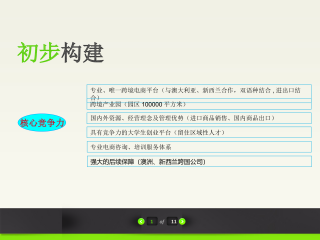
 2025-01-09 27
2025-01-09 27 -
跨境电商方案范文VIP免费
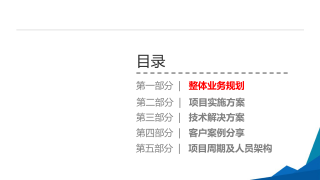
 2025-01-09 14
2025-01-09 14 -
创业计划书VIP免费
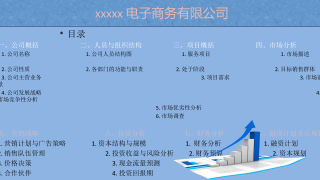
 2025-01-09 18
2025-01-09 18 -
xx生鲜APP计划书VIP免费

 2025-01-09 12
2025-01-09 12 -
跨境电商创业园商业计划书(盈利模式)VIP免费
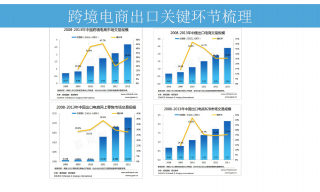
 2025-01-09 8
2025-01-09 8 -
跨境电商计划书VIP免费
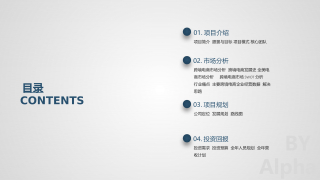
 2025-01-09 13
2025-01-09 13 -
绿色食品电商平台项目计划书VIP免费

 2025-01-09 22
2025-01-09 22 -
农产品电子商务商业计划书VIP免费

 2025-01-09 9
2025-01-09 9 -
农村电商平台商业计划书VIP免费
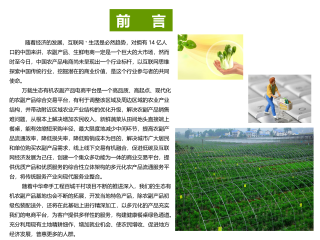
 2025-01-09 13
2025-01-09 13 -
生鲜商城平台商业计划书VIP免费
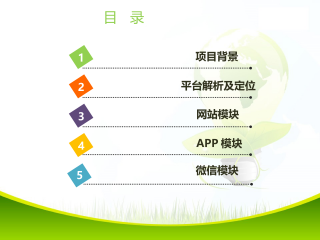
 2025-01-09 21
2025-01-09 21
作者:牛悦
分类:高等教育资料
价格:15积分
属性:73 页
大小:16.17MB
格式:DOC
时间:2024-11-11


